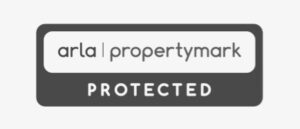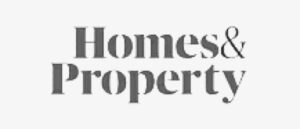
In recent years, the buy-to-let market has seen a number of changes influenced by various economic and regulatory factors. While the sector has experienced periods of rapid growth, it has also faced a fair share of challenges, in particular due to policy shifts aimed at moderating the housing market. Changes in tax relief rules and the introduction of stricter lending criteria have impacted landlords’ profitability and borrowing capacity.
Prospective landlords must navigate considerations such as potential interest rate rises, changes to tenant protection laws as well as the broader economic impacts of events like Brexit and the COVID-19 pandemic.
Buy-to-let mortgages continue to be a viable option for those looking to invest in property, provided they conduct thorough research and maintain a strategic approach to their investments.
What is a Buy-To-Let Mortgage?
A buy-to-let mortgage is designed for individuals looking to purchase a property that will then be rented out to tenants. Unlike more typical residential mortgages which are for properties where the owner will live, buy-to-let mortgages cater to the needs of landlords.
The key differences between the two include higher interest rates, larger deposit requirements and different affordability assessments. Mortgage lenders will often focus on the potential rental income from the property rather than just the borrower’s personal income when assessing buy-to-let mortgage applications.
Who Needs a Buy-To-Let Mortgage?
Buy-to-let mortgages are perfect for those looking to diversify their investment portfolio, retirees seeking a steady income stream or those looking to capitalise on the rise of property values. Many investors choose buy-to-let properties because of the benefits of having both rental income and as well as the potential long-term capital gains. Additionally, buy-to-let properties can provide a more predictable and stable investment compared to more volatile prospects like the stock markets.
Types of Buy-To-Let Mortgages
If you are applying for a buy-to-let mortgage, it is essential to understand the various types available to determine which best suits your investment strategy and financial situation.
Fixed Rate Buy-To-Let Mortgages
Fixed rate buy-to-let mortgages offer an interest rate that remains constant for a set period, typically ranging from two to five years. The main benefit of a fixed rate mortgage is the predictability of monthly payments which helps investors manage their budgets more effectively. This stability can be particularly advantageous in times of fluctuating interest rates. However, fixed rate mortgages often come with higher initial interest rates compared to variable rate options. There may be early repayment charges if you decide to exit the mortgage before the term ends.
Variable Rate Buy-To-Let Mortgages
Variable rate buy-to-let mortgages have interest rates that can change over time. There are several types of variable rate mortgages:
- Standard Variable Rate (SVR) where the lender’s default rate can change at their discretion.
- Tracker Mortgages where the interest rate is tracked by the Bank of England’s base rate, moving up or down in line with it.
The biggest advantage of variable rate mortgages is the potential for lower initial interest rates as well as the possibility that these rates may reduce if the base rate decreases. This does, however, mean that the monthly payments can increase if interest rates rise, leading to less predictable costs and difficulty in budgeting.
Interest-Only vs. Repayment Mortgages
Interest-only and repayment mortgages represent two different approaches to paying off your loan:
- Interest-Only Mortgages where you only pay the interest each month, keeping your monthly payments lower. With interest-only mortgages, the full loan amount is repaid at the end of the mortgage term, usually by selling the property or using other investments. While the advantage of lower monthly payments is useful, the risk is that you must ensure you have a strategy to repay the capital at the end of the term.
- Repayment Mortgages where each monthly payment covers both interest and a portion of the principal loan amount. This means the mortgage will be fully paid off by the end of the term. While monthly payments are higher, this option provides the security of gradually reducing your debt and ultimately owning the property outright.
Eligibility and Requirements
Understanding the eligibility criteria and requirements for buy-to-let mortgages is crucial for prospective investors to ensure they meet the necessary conditions before applying.
Criteria for Borrowers
Minimum Age and Income Requirements
Most lenders require borrowers to be at least 21 years old, although some may set the minimum age at 25. Additionally, applicants typically need to have a minimum annual income, often around £25,000, excluding rental income. This ensures that the borrower has a stable financial foundation to manage potential shortfalls in rental income or periods when the property might be vacant.
Credit Score Considerations
Lenders assess credit history to gauge the borrower’s reliability and ability to manage debt. A higher credit score increases the chances of securing a mortgage with favourable terms and lower interest rates. Those with lower credit scores might still obtain a mortgage but may face higher interest rates and stricter conditions.
Deposit Requirements
Typical Deposit Amounts
Buy-to-let mortgages generally require a larger deposit compared to residential mortgages. Typically, lenders ask for a minimum deposit of 25% of the property’s value, although this can range from 20% to 40% depending on the lender and the borrower’s financial profile.
Loan-to-Value (LTV) Ratios
The Loan-to-Value (LTV) ratio is a crucial factor in buy-to-let mortgages. It represents the ratio of the loan amount to the property’s value. For example, a 75% LTV means the borrower can take out a loan for 75% of the property’s value, while the remaining 25% must be covered by the deposit. Lower LTV ratios typically result in better interest rates and terms.
Property Requirements
Acceptable Property Types
Lenders often have specific criteria regarding the types of properties they will finance. Generally, standard residential properties like houses and flats are acceptable. However, some lenders might be hesitant to approve mortgages for non-standard properties, such as those made from unconventional materials or properties in need of significant renovation.
Location and Condition Considerations
The property’s location and condition are also important factors. Lenders prefer properties in areas with strong rental demand and good market stability. The property should be in good condition, as lenders may require an inspection to ensure it is suitable for renting; properties in poor condition or in areas with low rental demand may pose a higher risk to lenders, affecting the approval process and terms of the mortgage.
Application Process
Preparing to Apply
Necessary Documentation
Before applying for a buy-to-let mortgage, you should gather all the necessary documentation to streamline the process. This typically includes:
- Proof of identity (passport or driving licence)
- Proof of address (utility bills or bank statements)
- Proof of income (pay slips, tax returns or accounts if self-employed)
- Bank statements (usually covering the last three to six months)
- Details of any existing loans or credit commitments
- A business plan for the buy-to-let property (some lenders may require this)
Financial Assessment and Planning
Conduct a thorough financial assessment and plan your finances carefully. Calculate your expected rental income and compare it with your mortgage repayments and other costs such as property maintenance, insurance and potential periods of vacancy. Ensure you have a buffer for unexpected expenses and consider consulting with a financial advisor to solidify your investment strategy.
Steps in the Application Process
1. Initial Consultation with a Mortgage Advisor
Begin the application process by consulting with a mortgage advisor. They can help you understand your options, recommend suitable mortgage products and guide you through the application process. An advisor can also help you assess your eligibility and prepare the necessary documentation.
2. Submission of Application
Once you have chosen a mortgage product, submit your application to the lender. This involves providing all the required documentation and completing the lender’s application form. Ensure all information is accurate and complete to avoid delays in processing.
3. Valuation and Underwriting
After submitting your application, the lender will arrange a valuation of the property to determine its market value and suitability as a buy-to-let investment. As this is happening, the lender’s underwriters will review your application, assessing your financial situation, credit history and the property’s potential rental income.
4. Approval and Completion
If your application is approved, the lender will issue a formal mortgage offer. Review the offer carefully and, if everything is in order, accept it. The final steps involve completing the legal aspects of the purchase, which will typically involve a solicitor or conveyancer. Once all legal matters are settled, the funds will be released and you can complete the purchase of your buy-to-let property.
Risks of Buy-To-Let Mortgages
Investing in buy-to-let properties can be lucrative, but it also involves various risks and considerations. Understanding these risks can help you make informed decisions and develop strategies to mitigate potential challenges.
Market Risks
Property Value Fluctuations
One of the significant risks in the buy-to-let market is the potential for property value fluctuations. Property prices can be influenced by a range of factors, including economic conditions, interest rates, and local market dynamics. A decline in property values can impact your investment’s profitability, especially if you need to sell the property during a market downturn.
Rental Market Changes
The rental market can also be volatile. Changes in supply and demand for rental properties, economic conditions affecting tenants’ ability to pay rent, and shifts in local rental markets can all influence your rental income. It’s essential to research the local market thoroughly and stay informed about trends that could affect rental demand and rental rates.
Financial Risks
Interest Rate Changes
Interest rates can have a significant impact on your mortgage repayments. Most buy-to-let mortgages have variable interest rates, meaning your payments could increase if interest rates rise. This can affect your cash flow and profitability. Fixed-rate mortgages can provide some protection against rate increases, but they often come with higher initial rates and potential early repayment charges.
Void Periods and Tenant Issues
Void periods, where the property is unoccupied and not generating rental income, can pose a financial risk. Additionally, tenant issues such as late payments, damage to the property, or legal disputes can lead to unexpected costs and stress. Maintaining a financial buffer and having a robust tenant vetting process can help manage these risks.
Legal and Regulatory Risks
Landlord Responsibilities
As a landlord, you have several legal responsibilities, including ensuring the property meets health and safety standards, handling deposits properly, and maintaining the property. Failing to meet these responsibilities can result in fines or legal action. It’s crucial to stay informed about your obligations and seek professional advice if needed.
Changes in Legislation
The buy-to-let market is subject to regulatory changes that can affect your investment. Recent examples include changes to tax relief on mortgage interest, stricter lending criteria, and new regulations for energy efficiency and tenant rights. Staying updated with legislative changes and planning for potential impacts is essential to managing your investment effectively.
Rental Guarantee Insurance
Adding rental guarantee insurance to your buy-to-let strategy is a vital step that will mitigate the risk of non-payment of rent by tenants. This type of insurance provides landlords with a safety net, ensuring a steady rental income even if tenants fall into arrears on their payments. By covering the rental income shortfall, landlords can maintain their mortgage payments and other property-related expenses without financial strain, preserving their investment’s profitability and stability.
Additionally, rental guarantee insurance often includes coverage for legal expenses, which can be crucial if you need to gain possession of the property due to tenant issues. Legal processes can be complex and costly, but with this insurance, the associated legal fees are covered, providing peace of mind and financial protection. This comprehensive coverage helps landlords navigate potential disputes more effectively, ensuring the rental property remains a viable and profitable investment.
Benefits of Buy-To-Let Mortgages
Investing in buy-to-let properties can offer several advantages, making it an attractive option for many investors. Here are some key benefits of buy-to-let mortgages:
Income Generation
One of the primary benefits of a buy-to-let mortgage is the potential to generate a steady stream of rental income. Rental yields can provide a reliable source of monthly cash flow and can help to cover your mortgage payments, maintenance costs and other expenses, with the potential for additional profit. Careful selection of properties in high-demand areas can maximise rental yields and enhance your overall returns.
Long-Term Investment
Property investment is often viewed as a long-term strategy due to the potential for the increase in value. Over time, property values tend to increase which allows you to build equity and achieve significant capital gains, thus enhancing the overall value of your investment portfolio. While property markets can be cyclical, historical trends show that property values generally rise over the long term, providing substantial returns when it comes time to sell.
Diversifying Your Portfolio
Including real estate in your investment portfolio can provide diversification, reducing overall risk and enhancing potential returns. Real estate investments are less correlated with traditional assets like stocks and bonds, meaning they can perform well even when other investments might be underperforming. This diversification can provide a more balanced and resilient portfolio, protecting your investments against market volatility. Additionally, real estate offers tangible assets that can provide both income and growth potential.
Understanding buy-to-let mortgages helps you to make more informed decisions that align with your financial goals. While there are of course inherent risks involved, the potential benefits make buy-to-let investments an attractive proposition.













